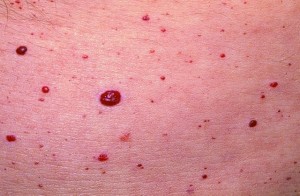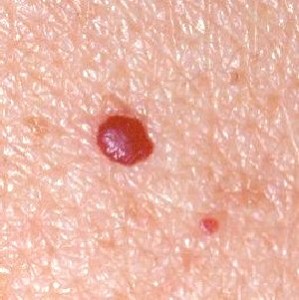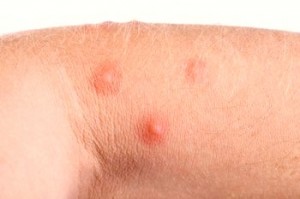Cherry Angioma are cherry red papules that grown on the skin due to an unusual increase of blood vessels. Also called ‘Campbell de Morgan’ spots, based on the name of the British surgeon Campbell De Morgan, who first discovered them in the 19th century, Cherry Angioma is one of the most common types of angioma.
Causes of Cherry Angioma
Cherry Angioma is mostly visible in people above the age of 30. The cause is not known though it is believed that it could be genetic.
Symptoms of Cherry Angioma
1. Bright, cherry-red papules on the skin with a flat top. The color can be purple as well
2. They first develop in the form of little papules that are just 1/10 of a millimeter, looking like small red dots. As they grow, they become a few millimeters even up to a centimeter in size. They begin to become thick and become raised, getting a dome shaped elevation on the skin.
3. Angiomas that grow closely form polypoid angioma. There can be profuse bleeding if they are injured because the blood vessels are close the surface of the skin.
4. Chemicals and compounds can also cause cherry angiomas like mustard gas, cyclosporine, bromides and butoxyethanol
Diagnosis of Cherry Angioma
The doctor will diagnose cherry angioma on the basis of the growth of the papules on the skin and their characteristic symptoms. Though additional tests are not needed, a biopsy may be done just for confirmation.
Cherry Angioma Treatment
Treatment is not really necessary for Cherry Angioma but if they tend to be an obstruction to your cosmetic appeal or if it is bleeding on a continual basis, cherry angioma can be removed by
• Traditional Cyrosurgery or electrosurgery -Burning
• Cyrotherapy-Freezing
• Laser through pulsed dye laser or Intense Pulsed Light
• Shave Excision
• Tests are being done to find out if a locally acting inhibitor of MEK1 (Myricetin) and Cyclin E1 can work as treatment for cherry angioma.
Cherry Angioma Pictures
Check out pictures of Cherry Angioma and how the little red papules look on the skin.


